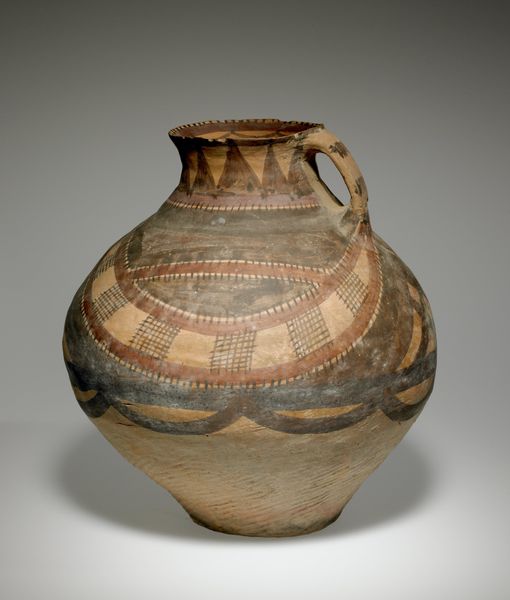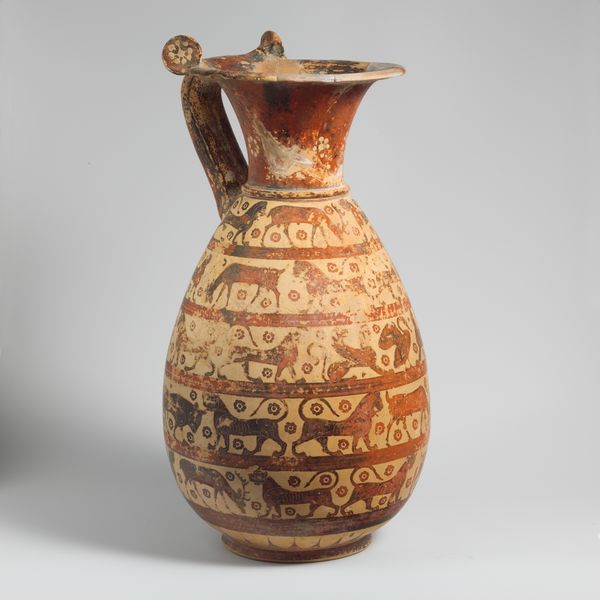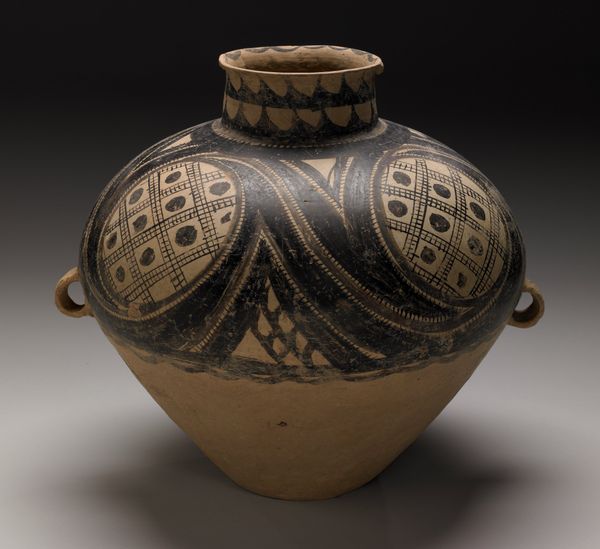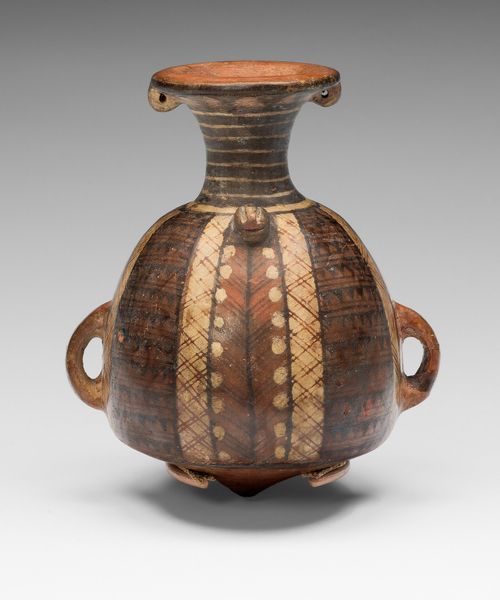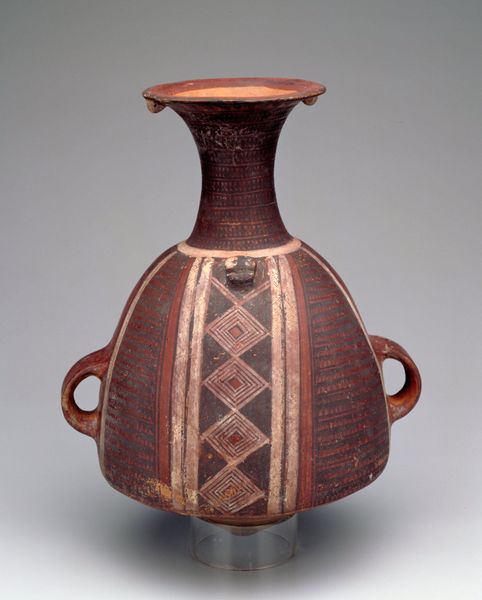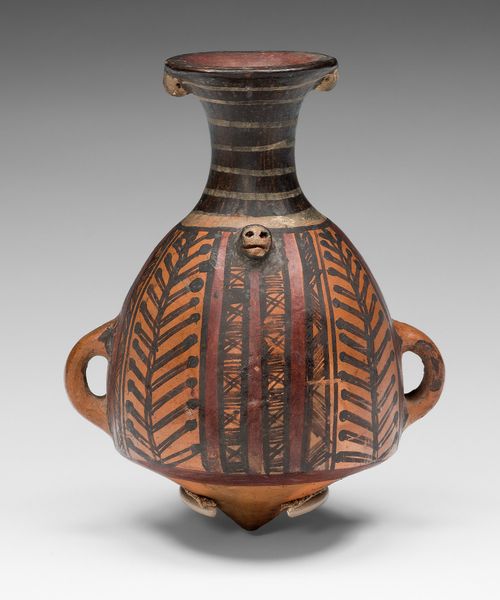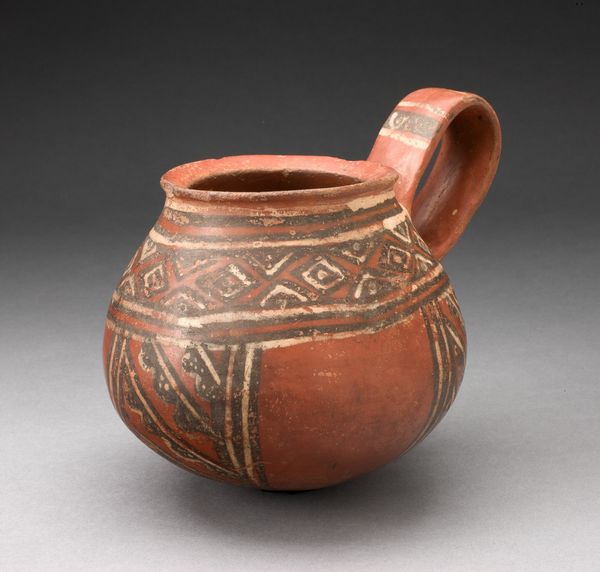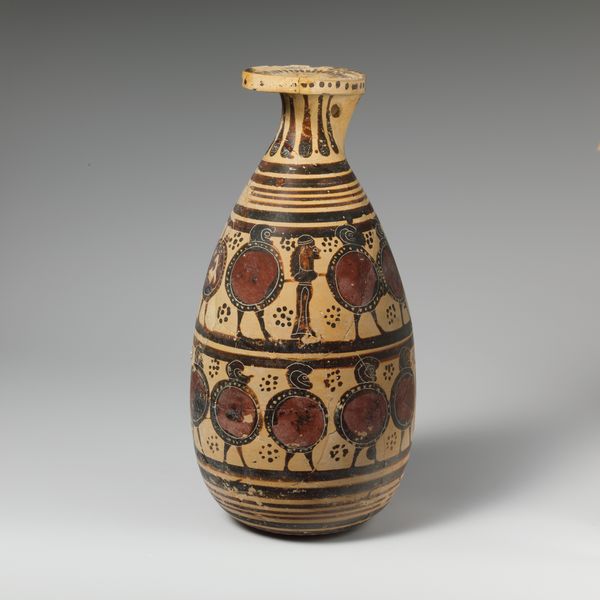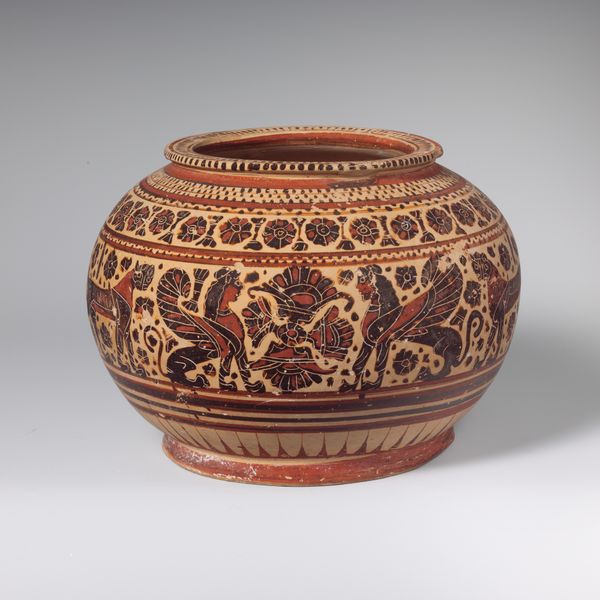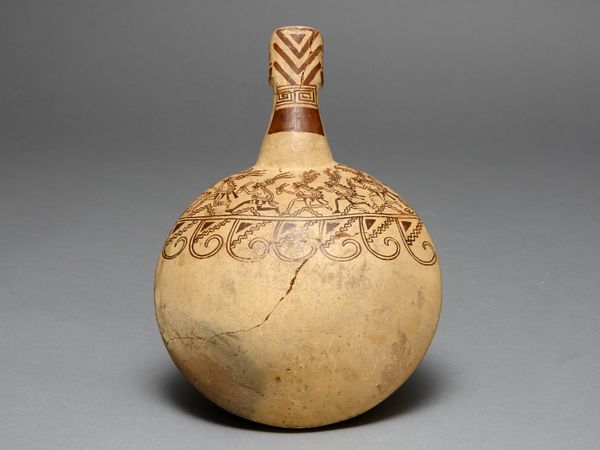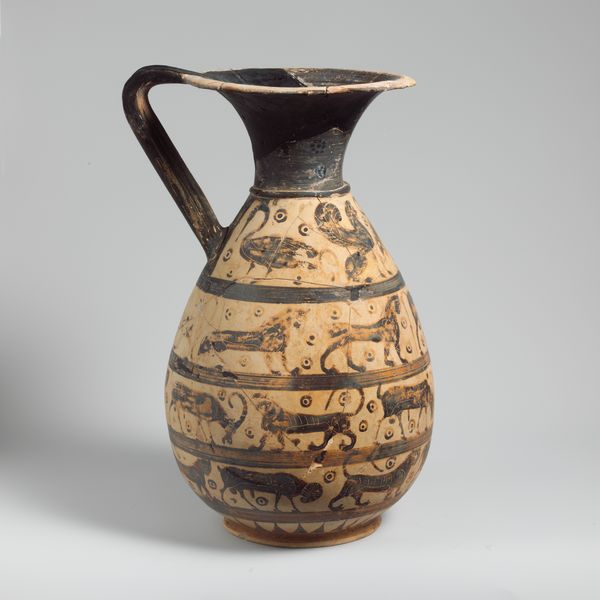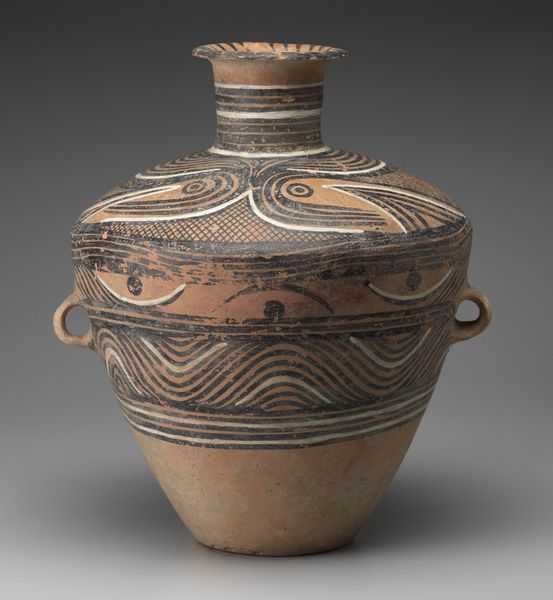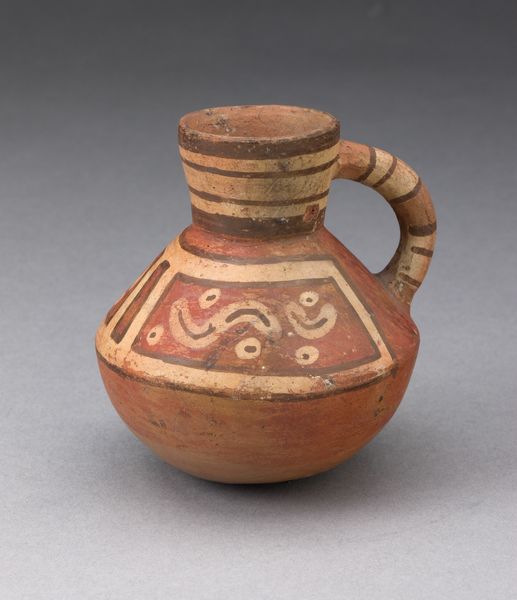
ceramic, earthenware
#
asian-art
#
ceramic
#
earthenware
#
geometric
#
ancient-mediterranean
#
ceramic
Dimensions: 10 11/16 x 10 x 10 in. (27.15 x 25.4 x 25.4 cm)
Copyright: Public Domain
Curator: Here we have a Majiayao culture jar, dating from around the 26th century, currently residing here at the Minneapolis Institute of Art. Editor: Its surface is visually quite active. The contrast between the textured base and the patterned upper section is immediately striking. It possesses a certain ancient gravitas. Curator: Indeed. Let's consider its construction. It’s earthenware, hand-built I presume, and the lower section bears distinct horizontal striations that evidence the coiling technique. Editor: I am interested in that rough texture juxtaposed with the painted geometric motifs, and then higher up a netted design around the neck of the jar. The surface isn’t smooth, glazed like you would expect in later Chinese pottery, its texture reveals a rawness in the creative process and available technology. Curator: Precisely. It subverts that smooth monolithic facade often associated with high art. Focusing on those upper painted designs, do you notice how geometric elements such as the circle and triangle have been used? Also, that the patterns seem to be contained and separated by simple lines, creating separate bands each with a certain theme? Editor: I think the patterns evoke ideas of community. It isn't some virtuoso solo performance, but a communal engagement with design. Maybe, and this is speculative, that the geometric representations are symbols denoting some significance to those that created it, to give order to the lives of the ancient civilization. Curator: One could also interpret it as a precursor to later systems of writing, with the artist employing early forms of encoding and symbolic articulation through decorative elements. The choice of symbols isn’t casual. Editor: Or perhaps, practically, such texture assisted the people who handled it, offering purchase when carrying or moving, embedding use with artwork. It feels important to view not just as static art object, but rather integrated deeply within social activities. Curator: Your point emphasizes the functional intersection of life and artistry. Certainly that changes how we would decode the object aesthetically! It brings it out of the purely aesthetic realm. Editor: Agreed, by contemplating materials and process in tandem with formal structure, we move toward a richer understanding, connecting abstract symbols to grounded labor. It isn’t just about design but about hands shaping the vessel. Curator: Thank you. You’ve helped me consider the integration of artistic technique with its social purpose, bringing this jar's function into focus as not simply ornamental but culturally representative.
Comments
No comments
Be the first to comment and join the conversation on the ultimate creative platform.
